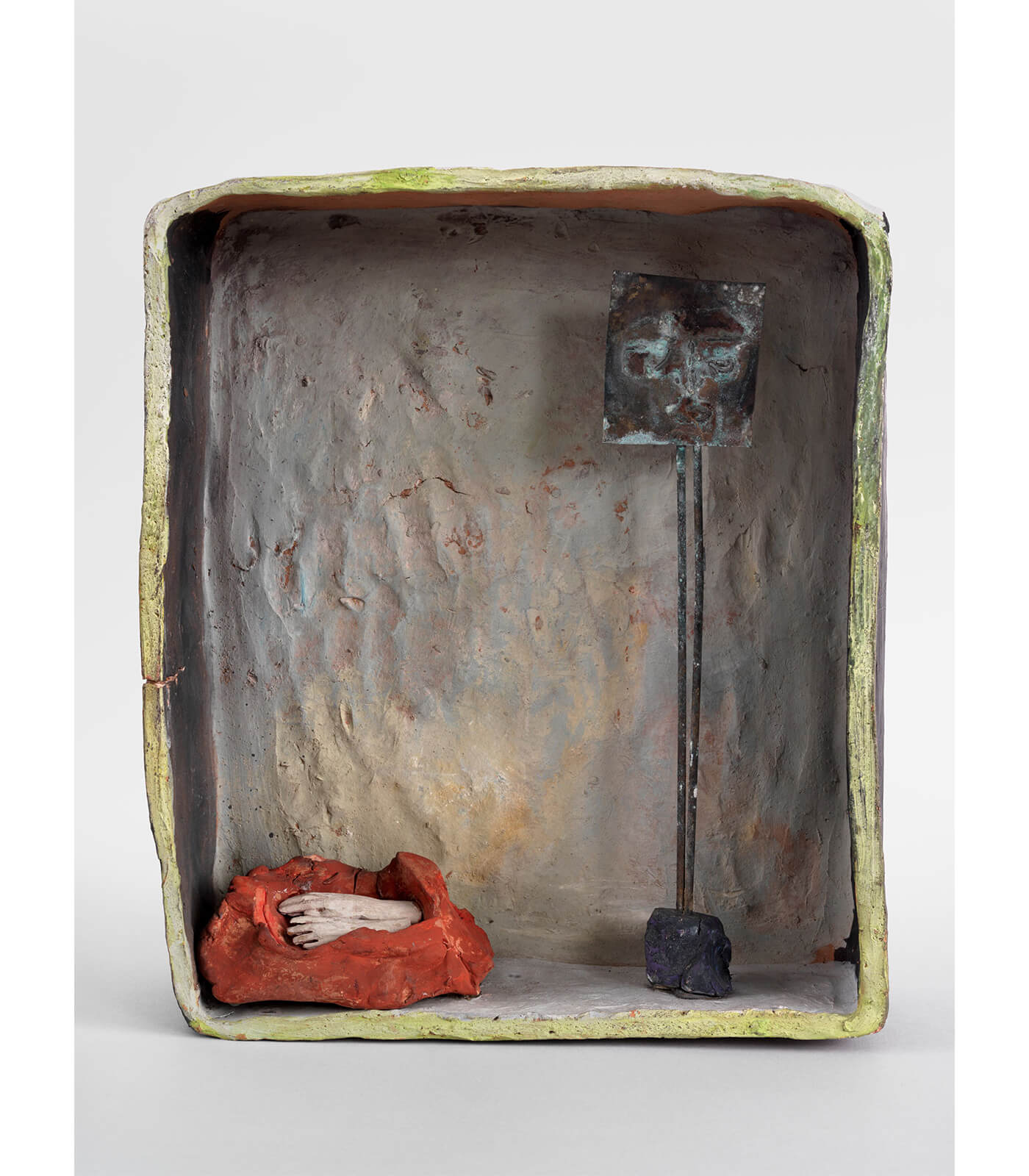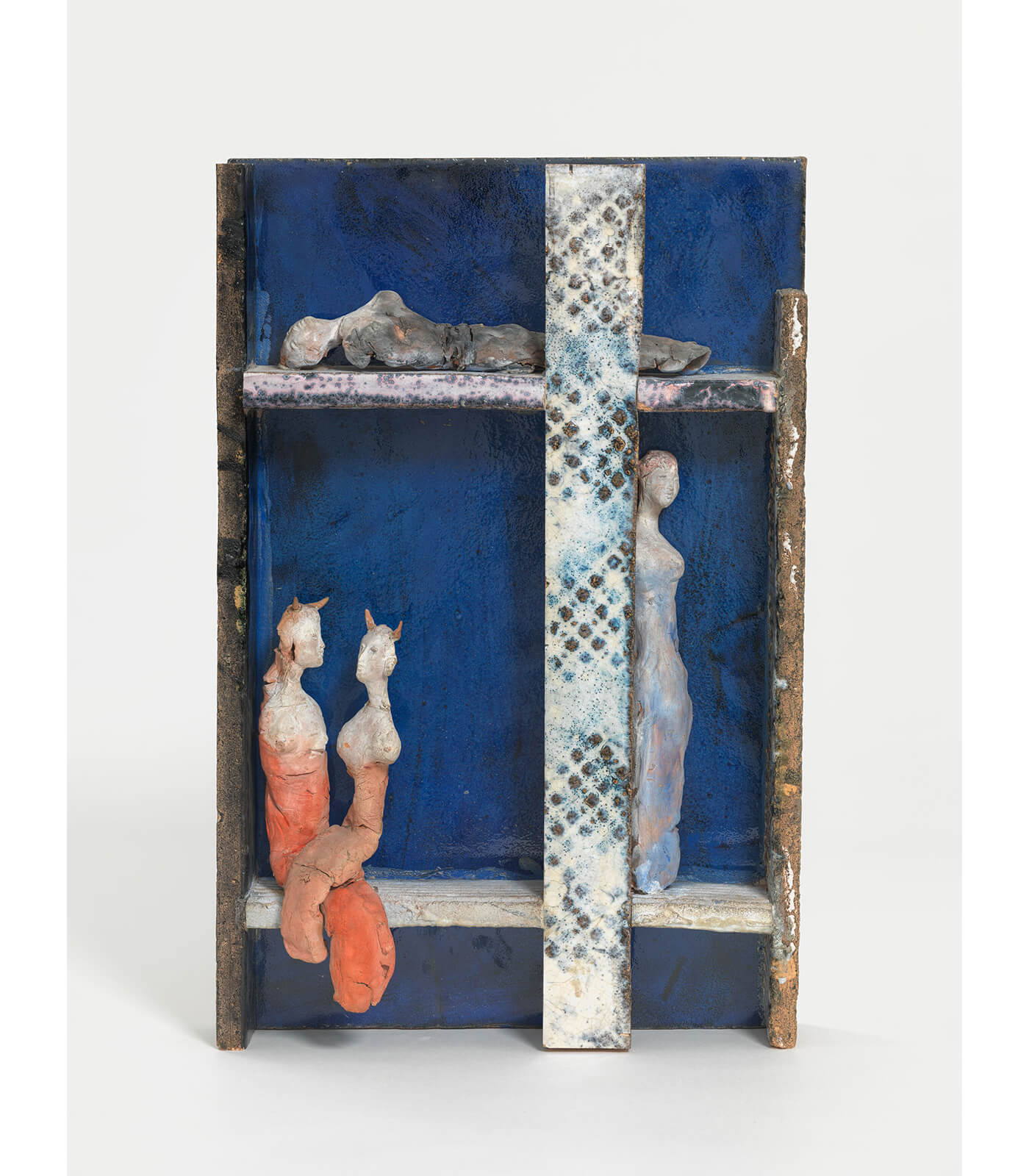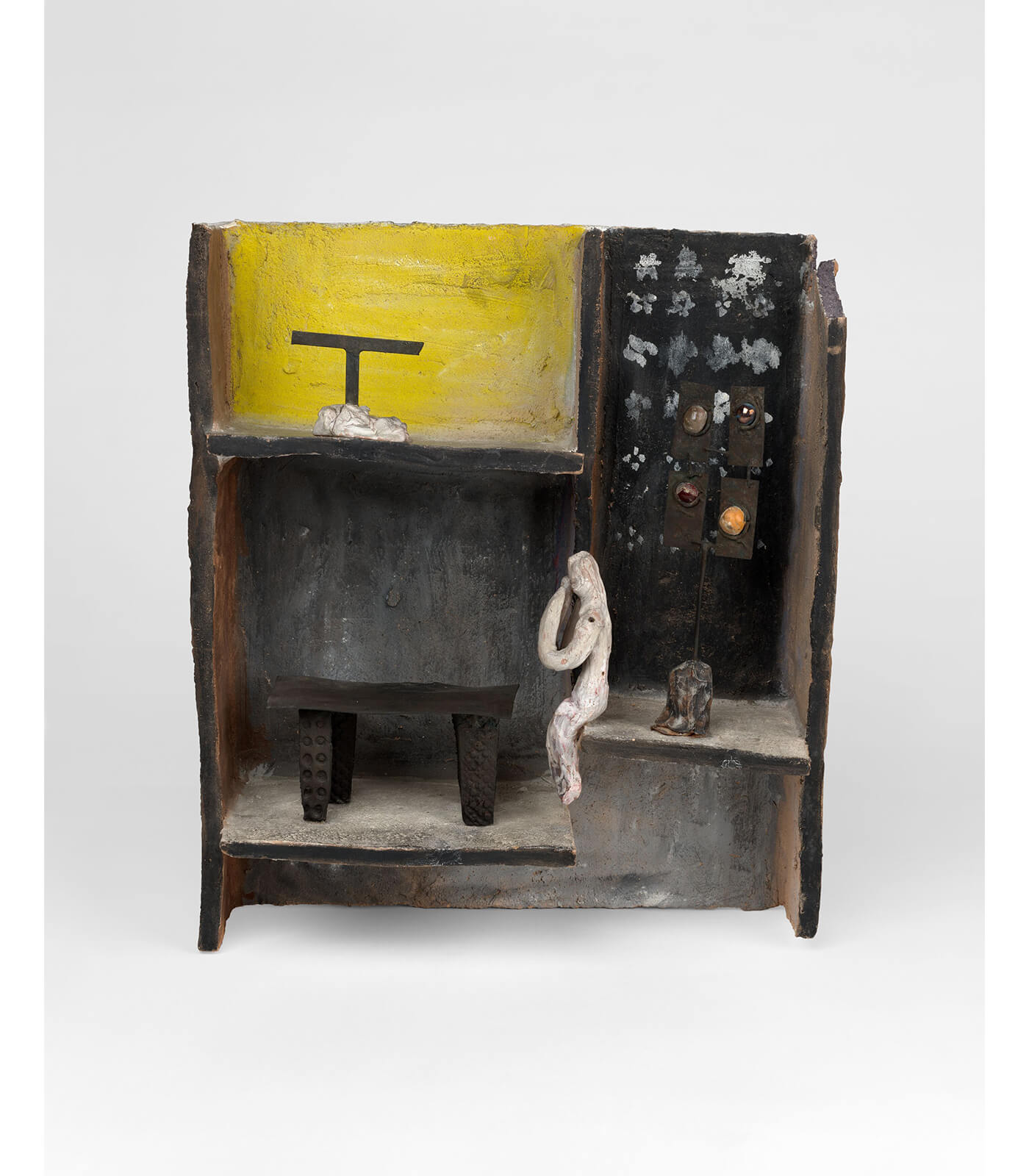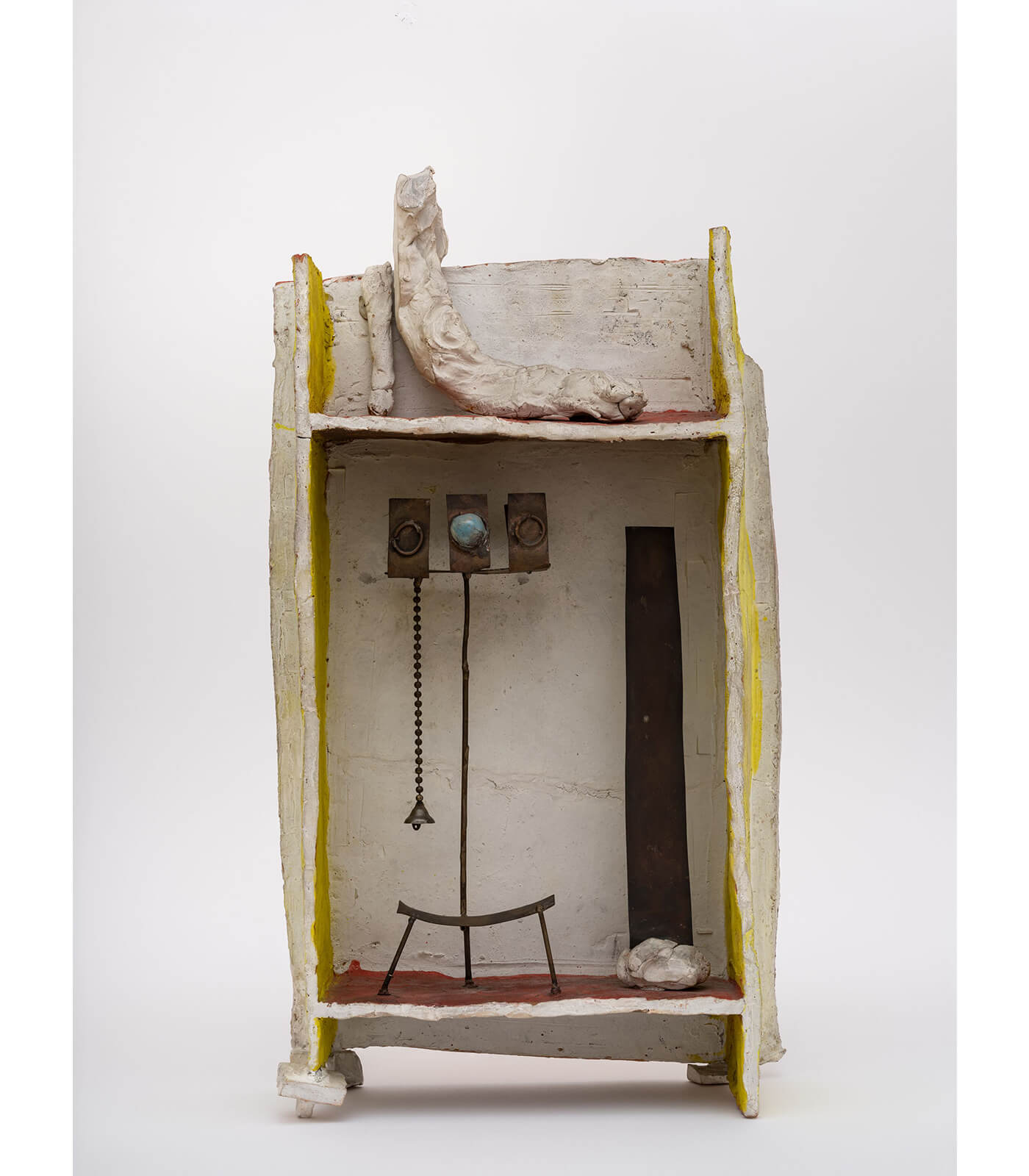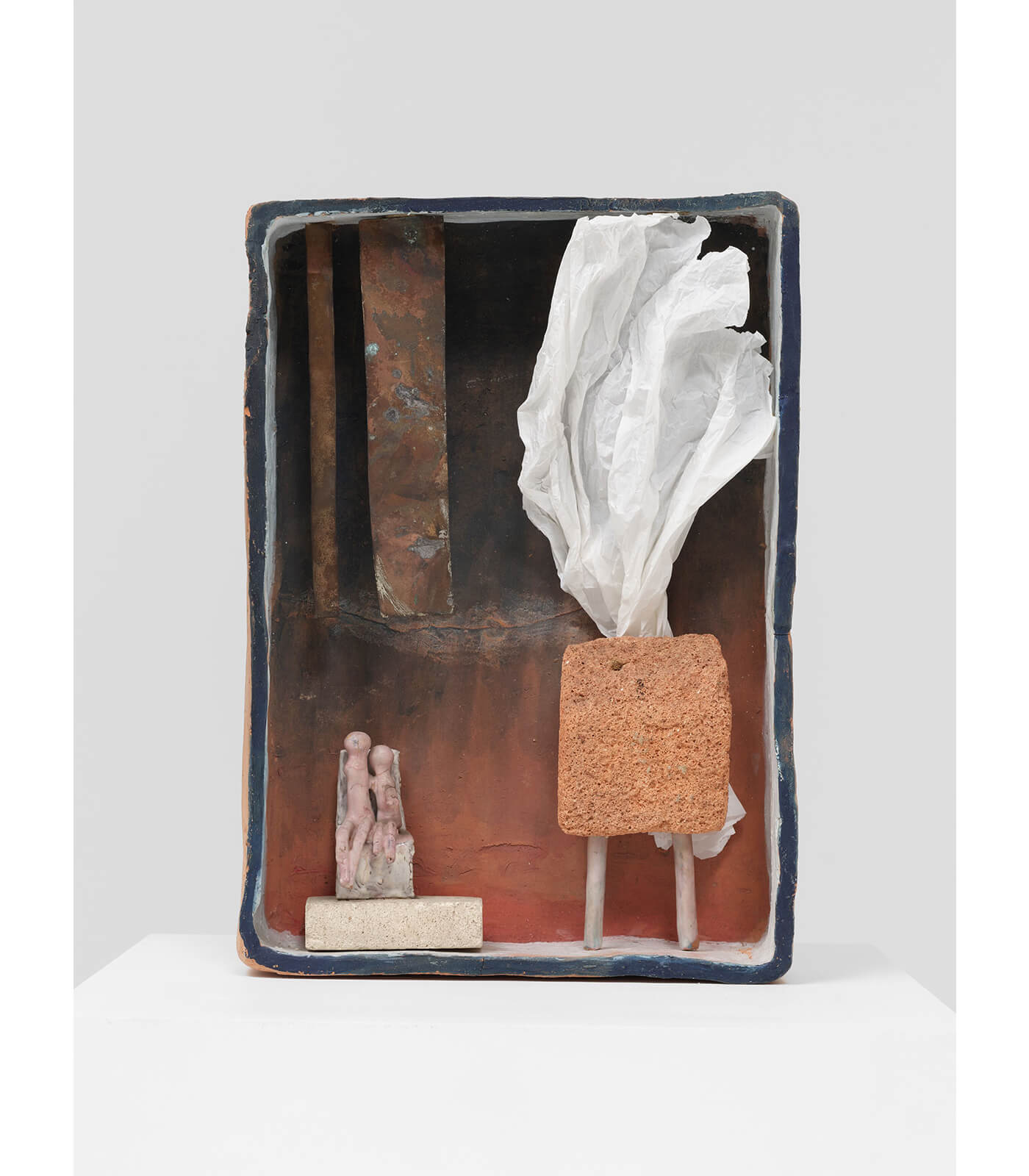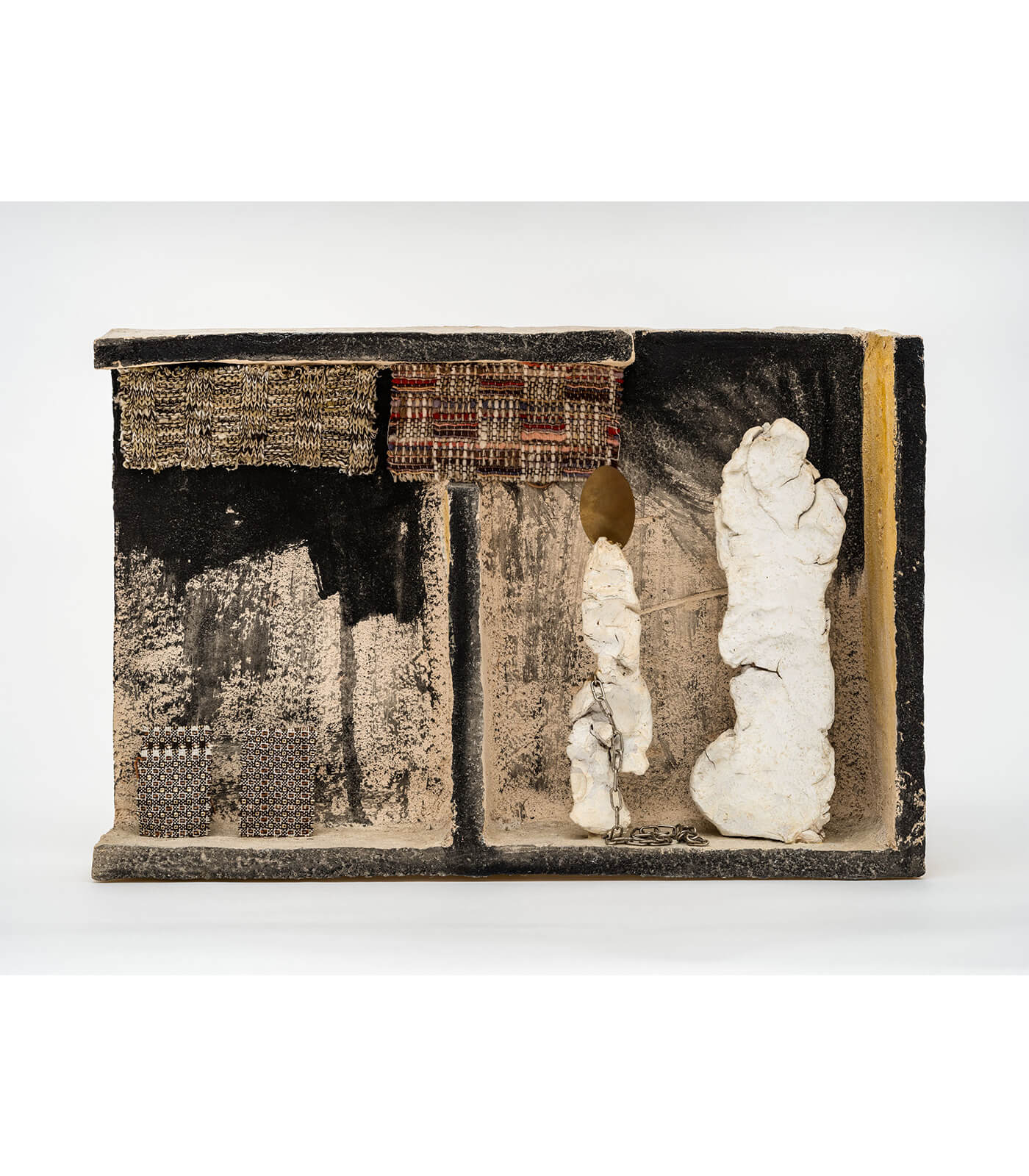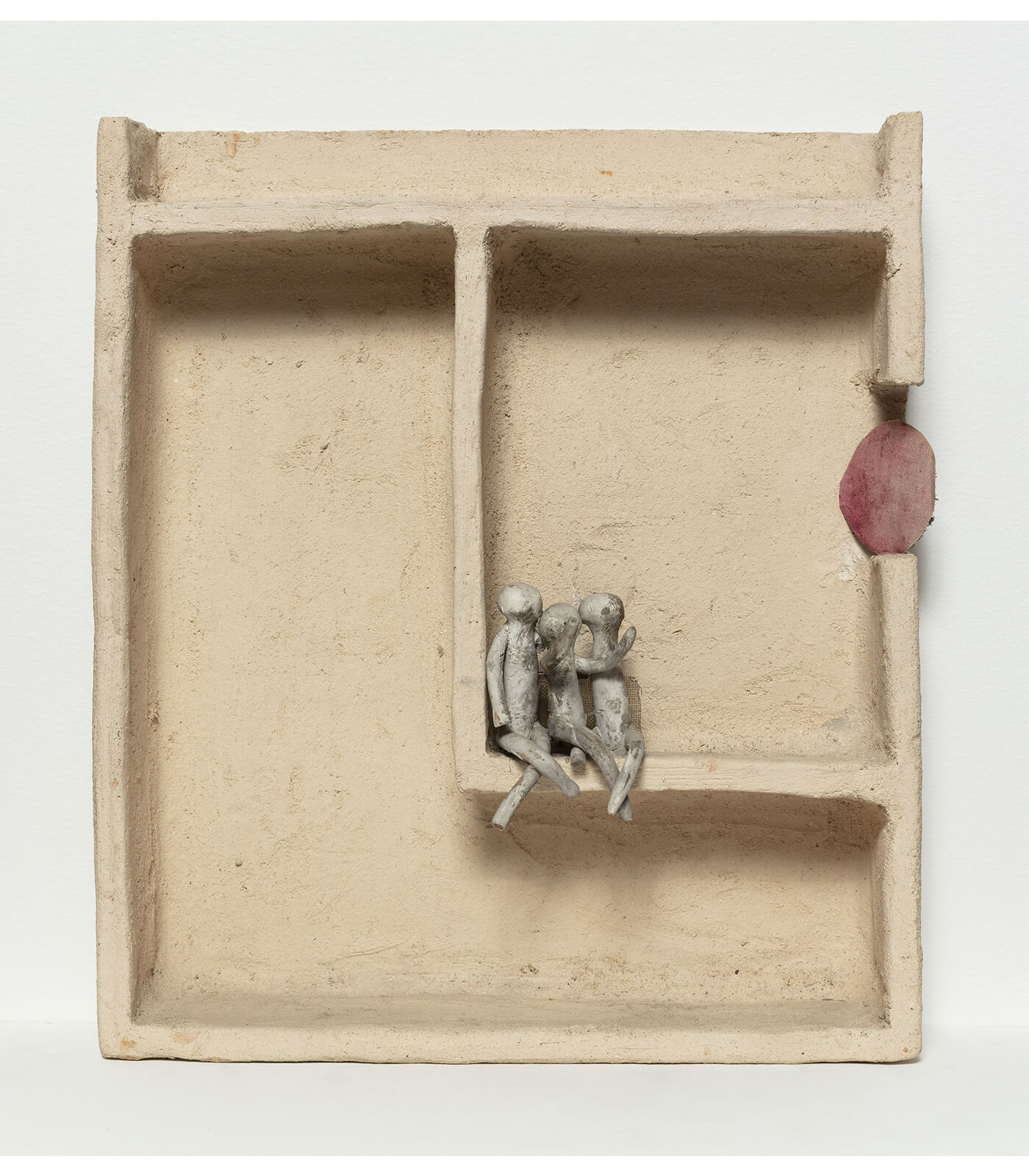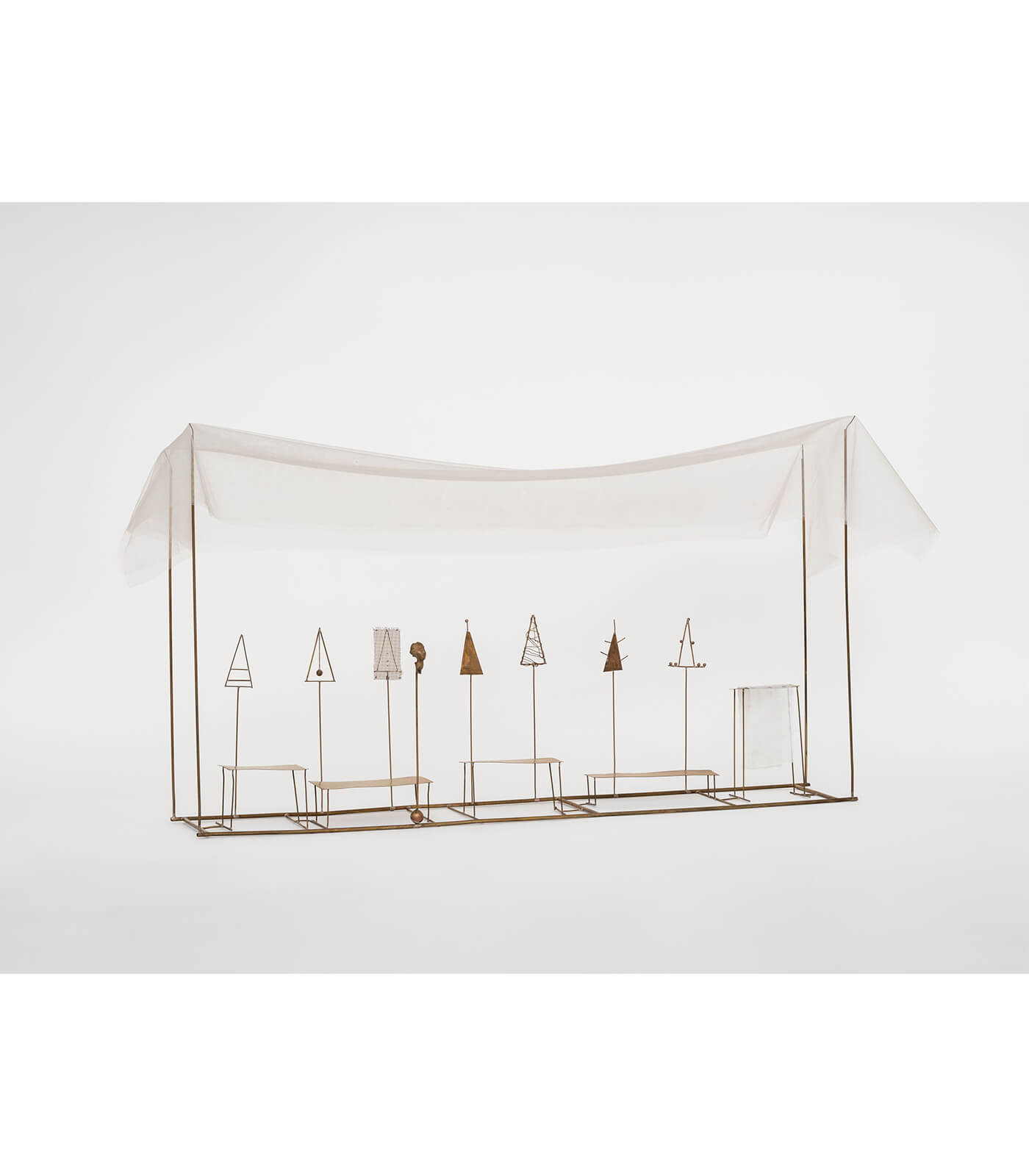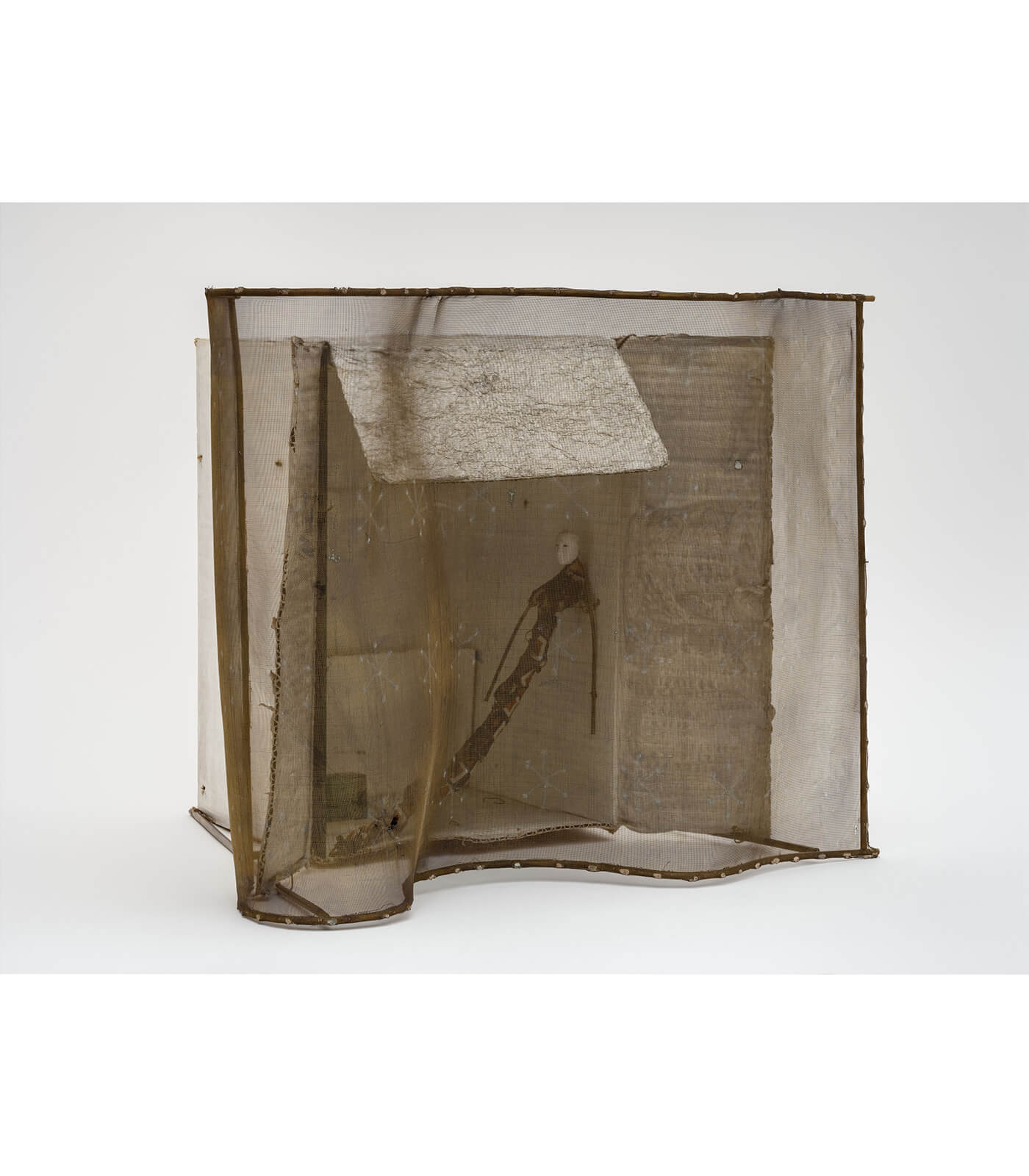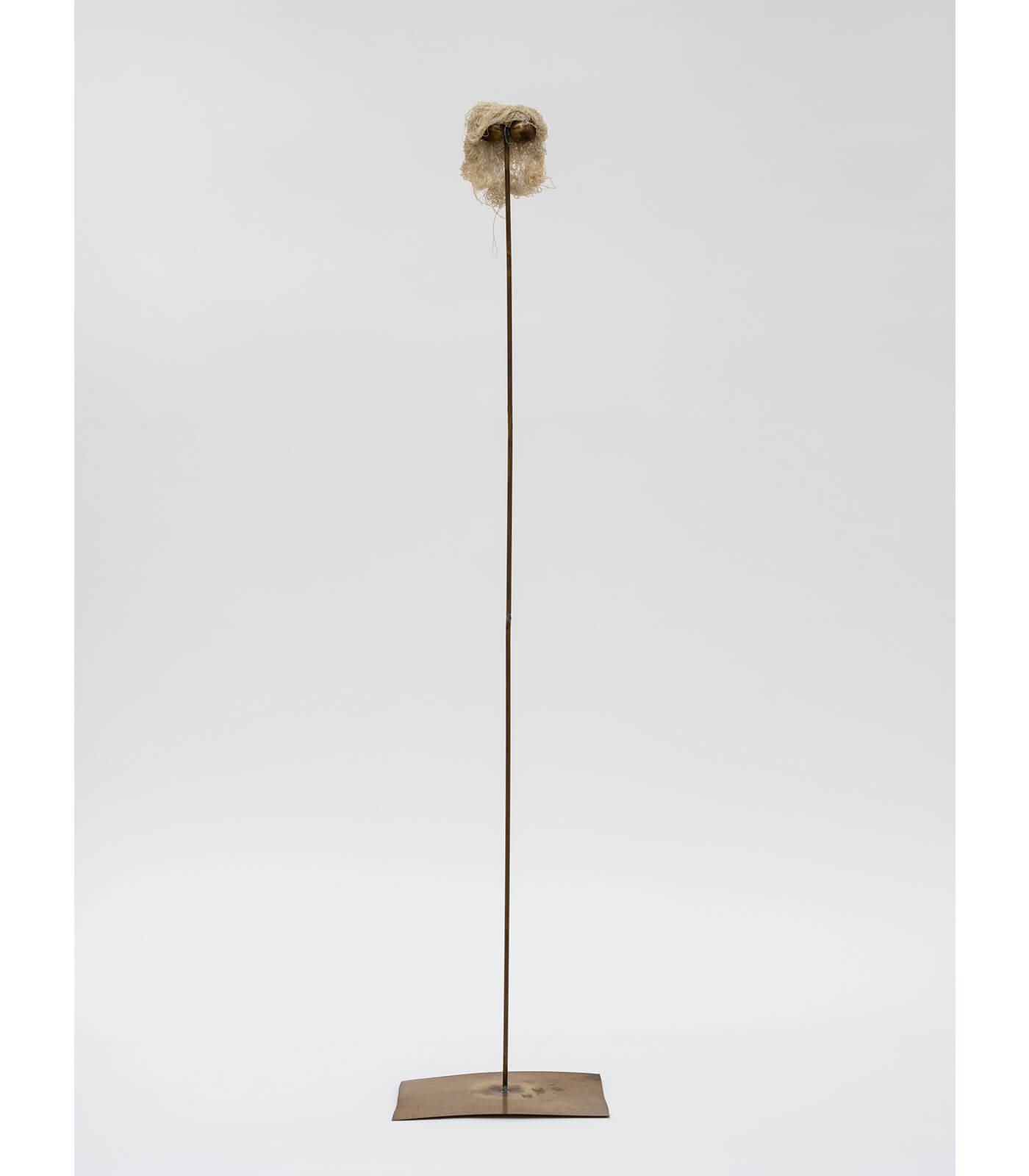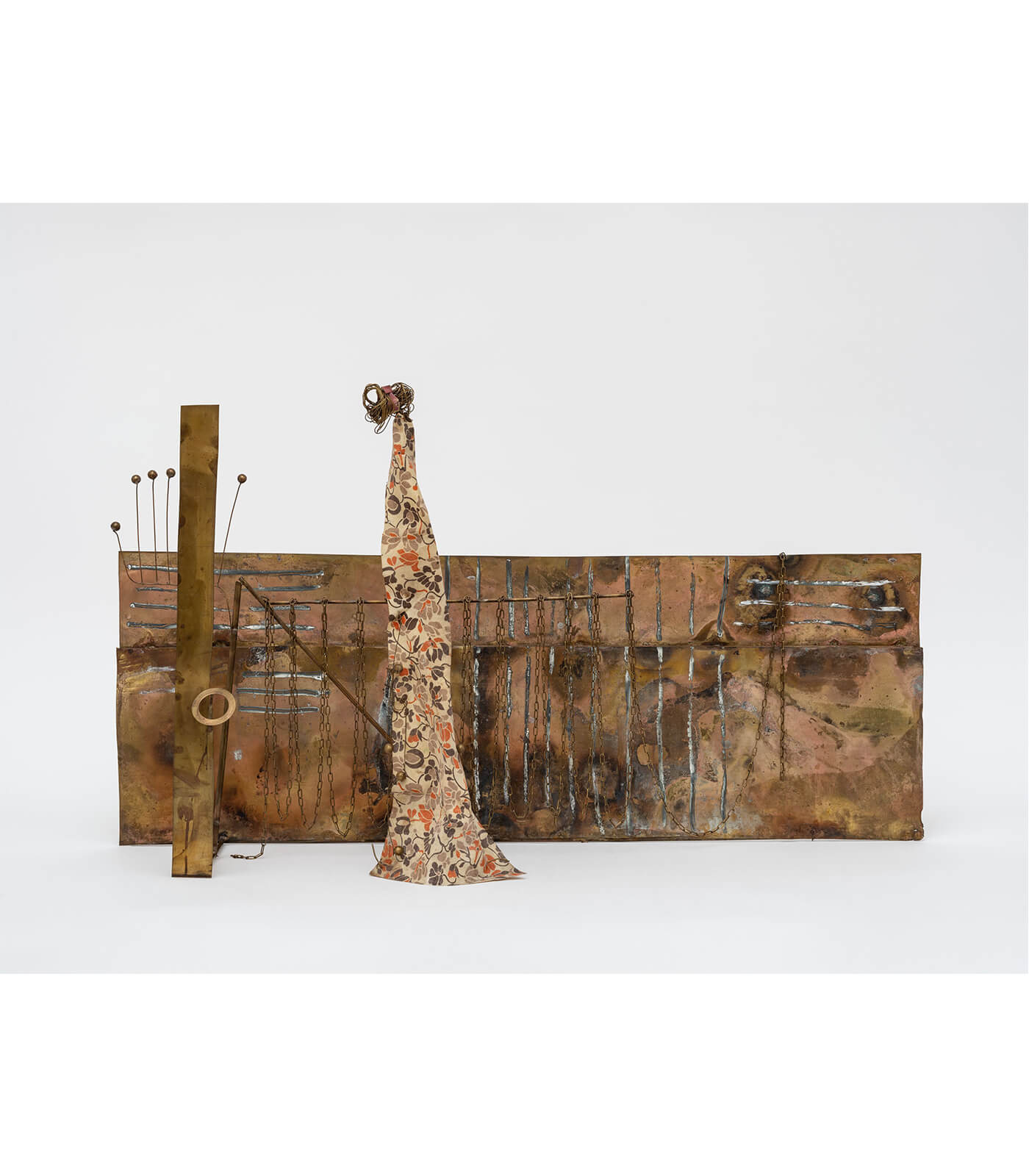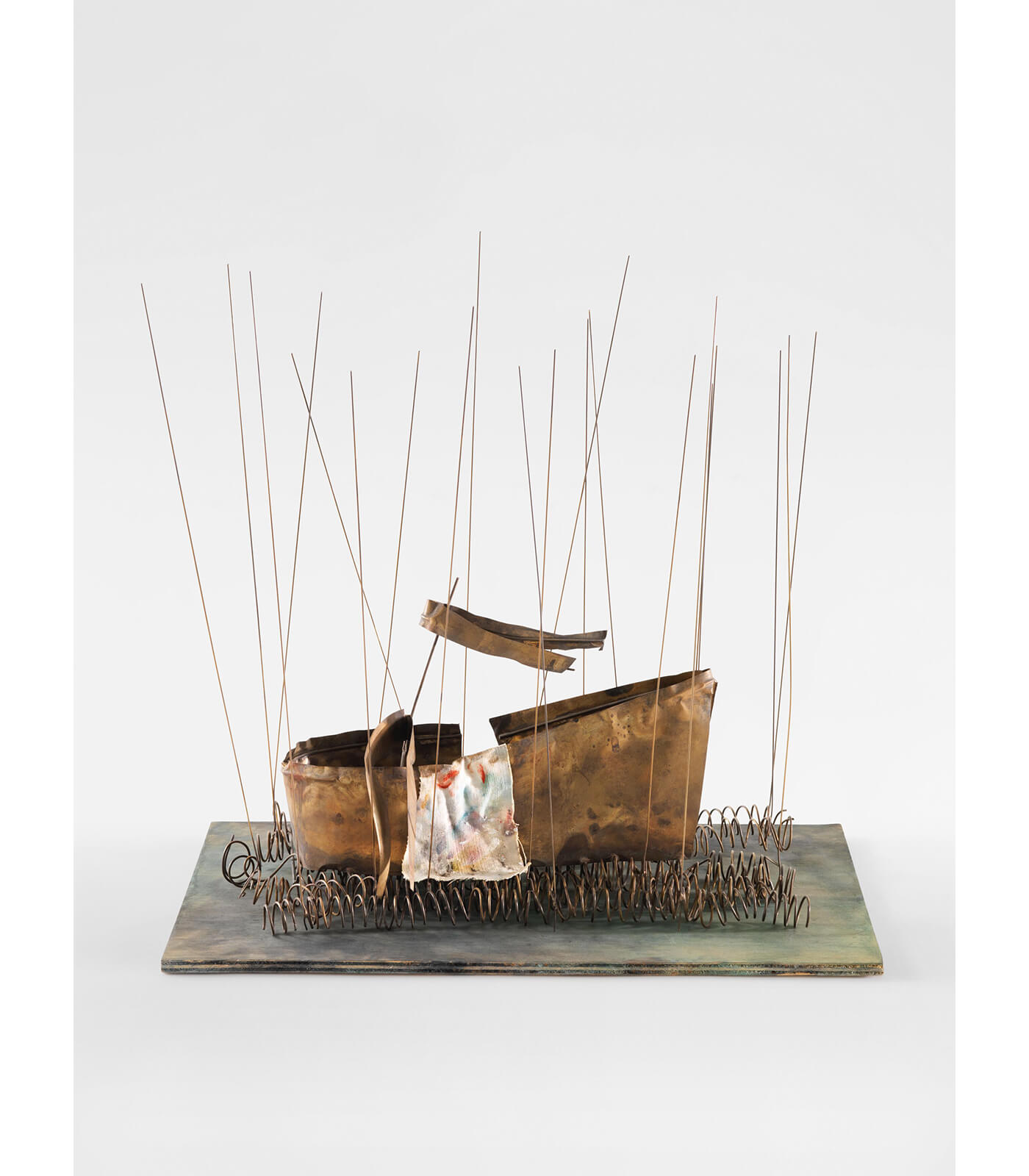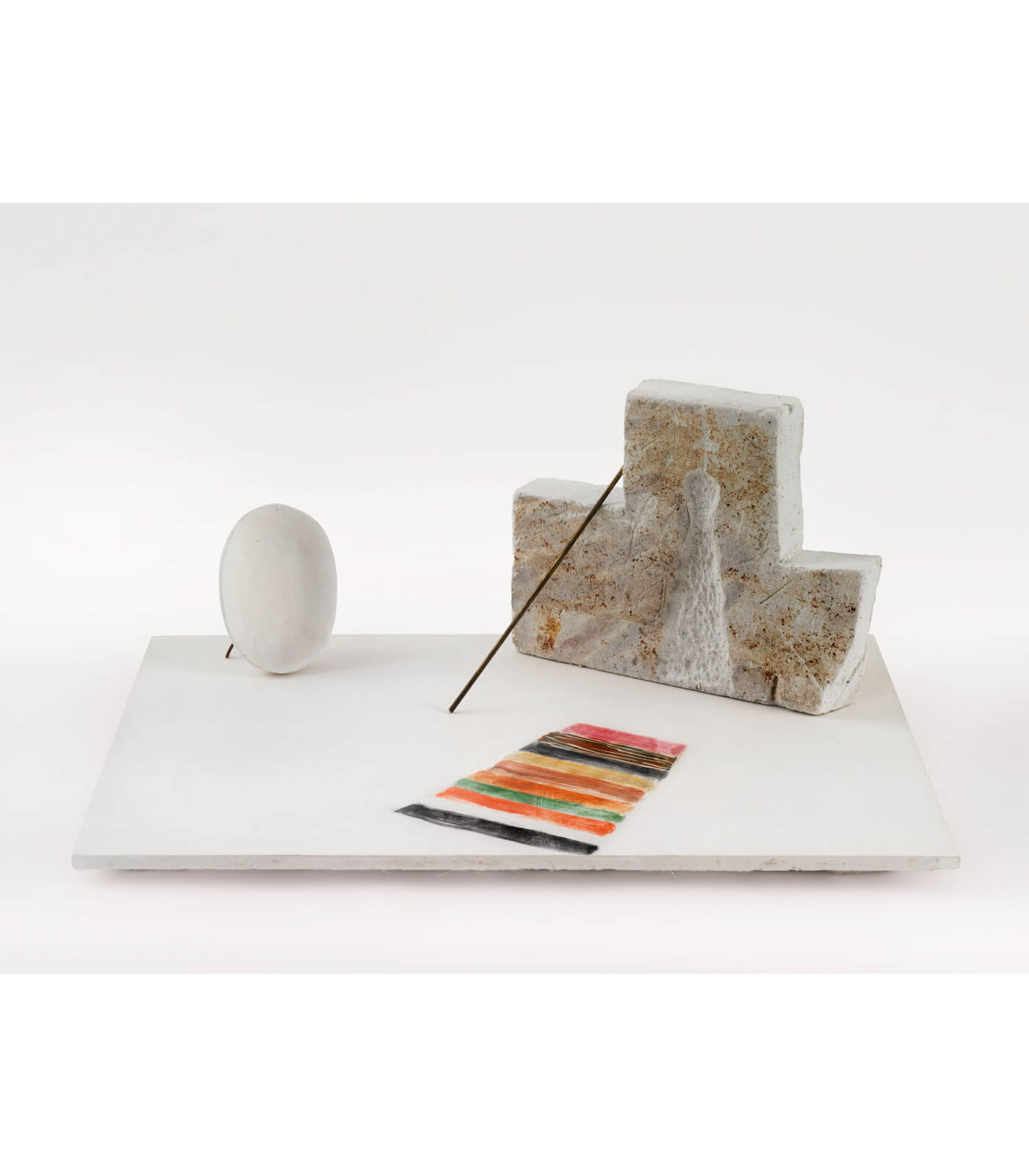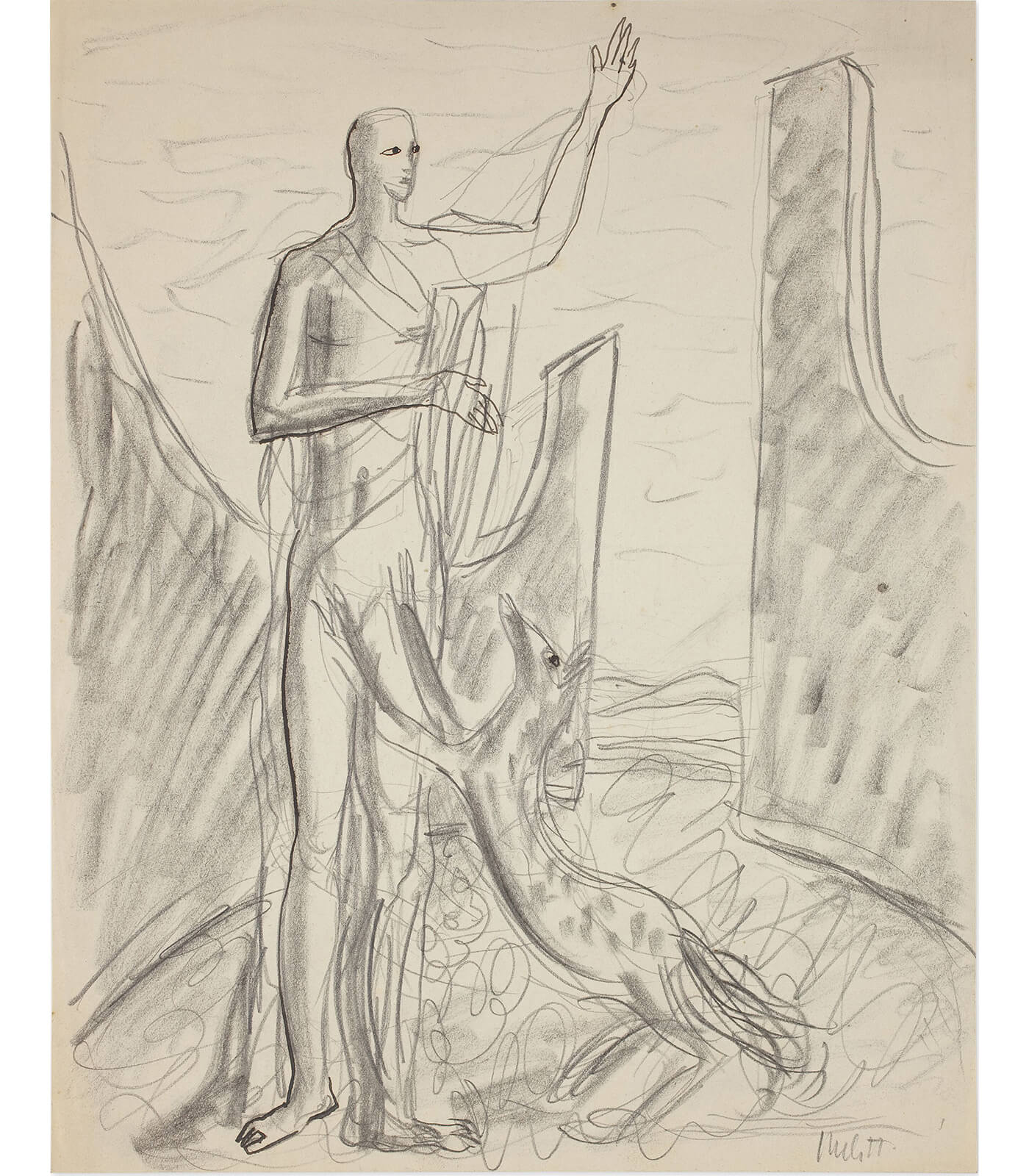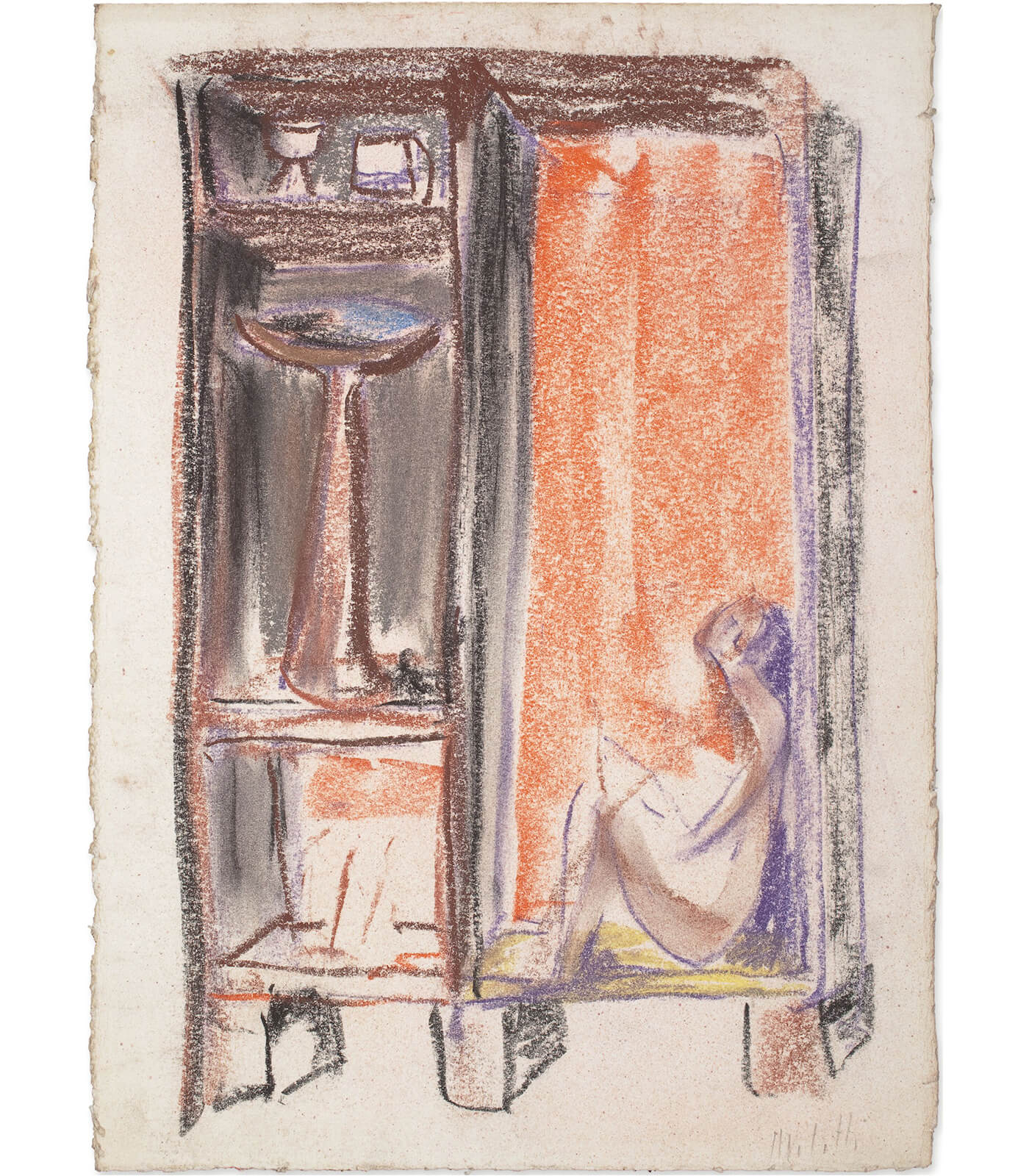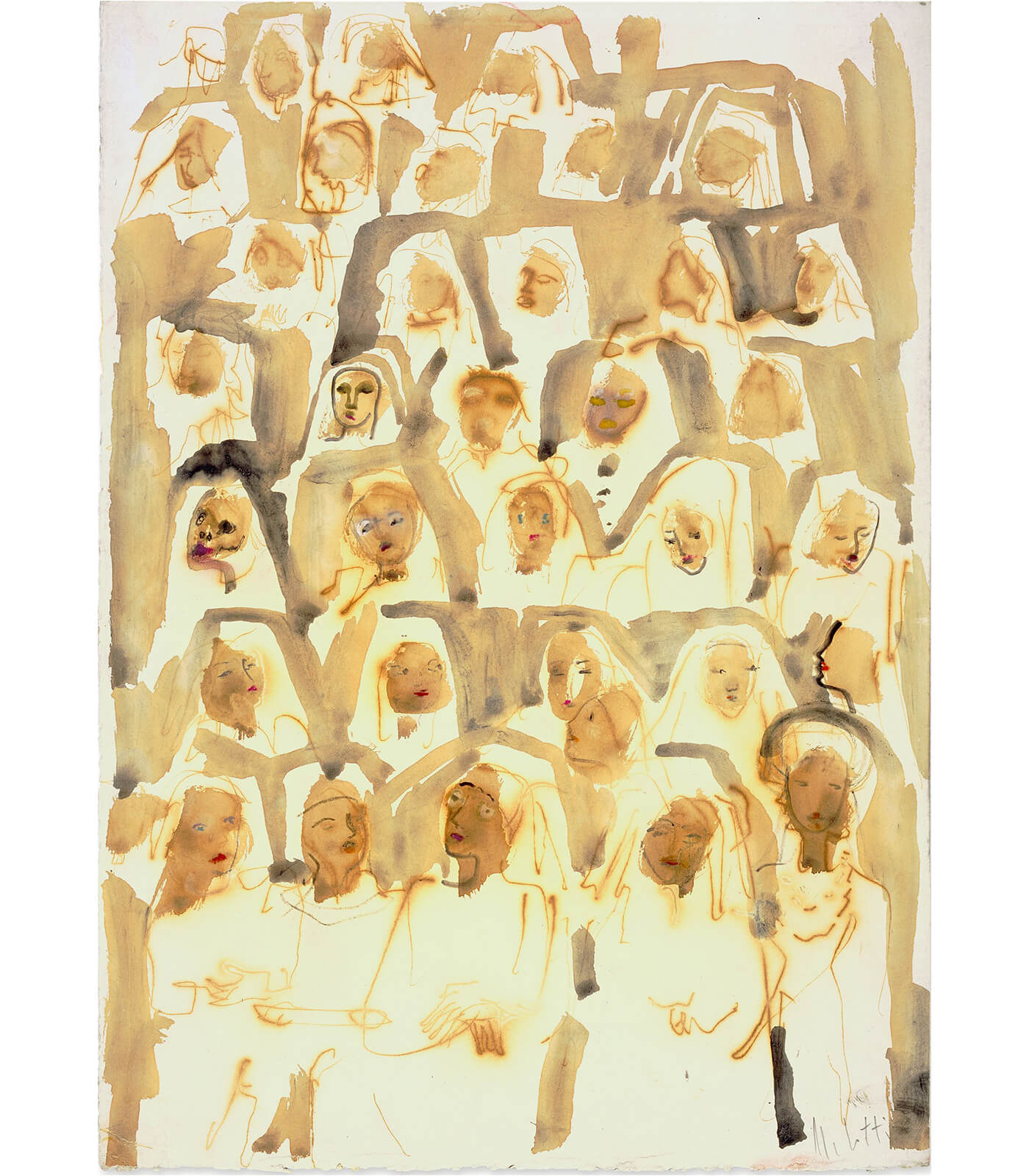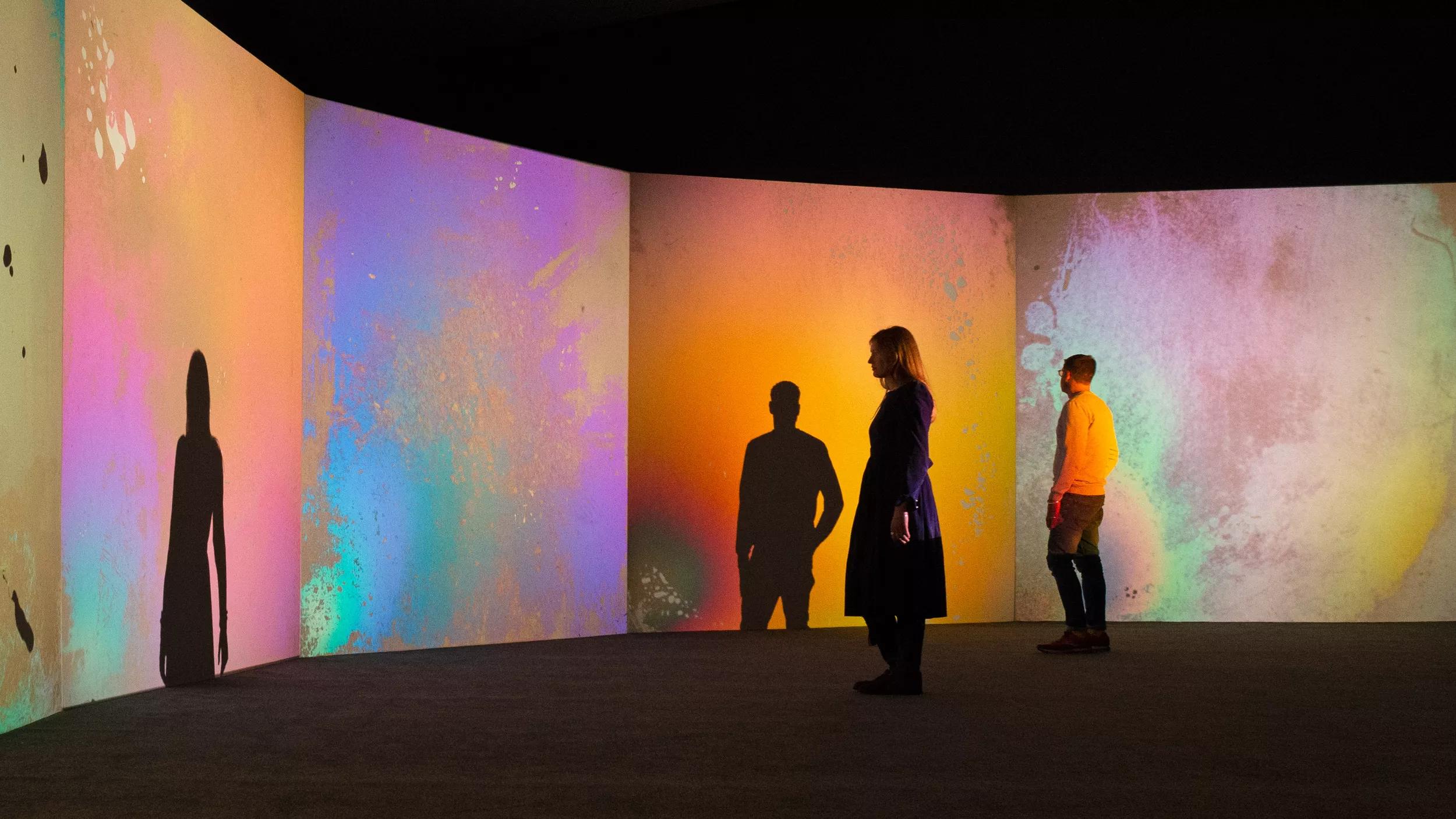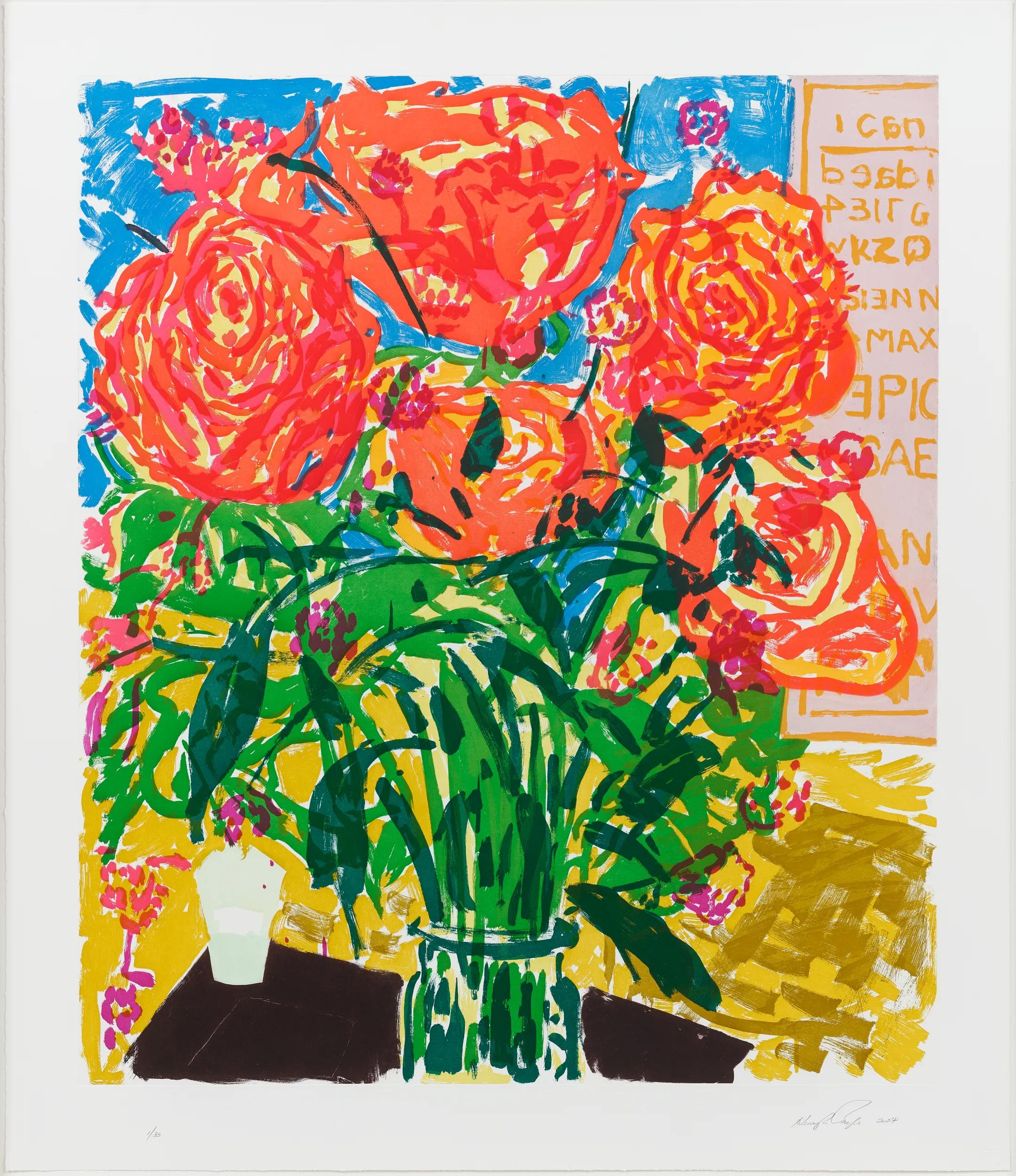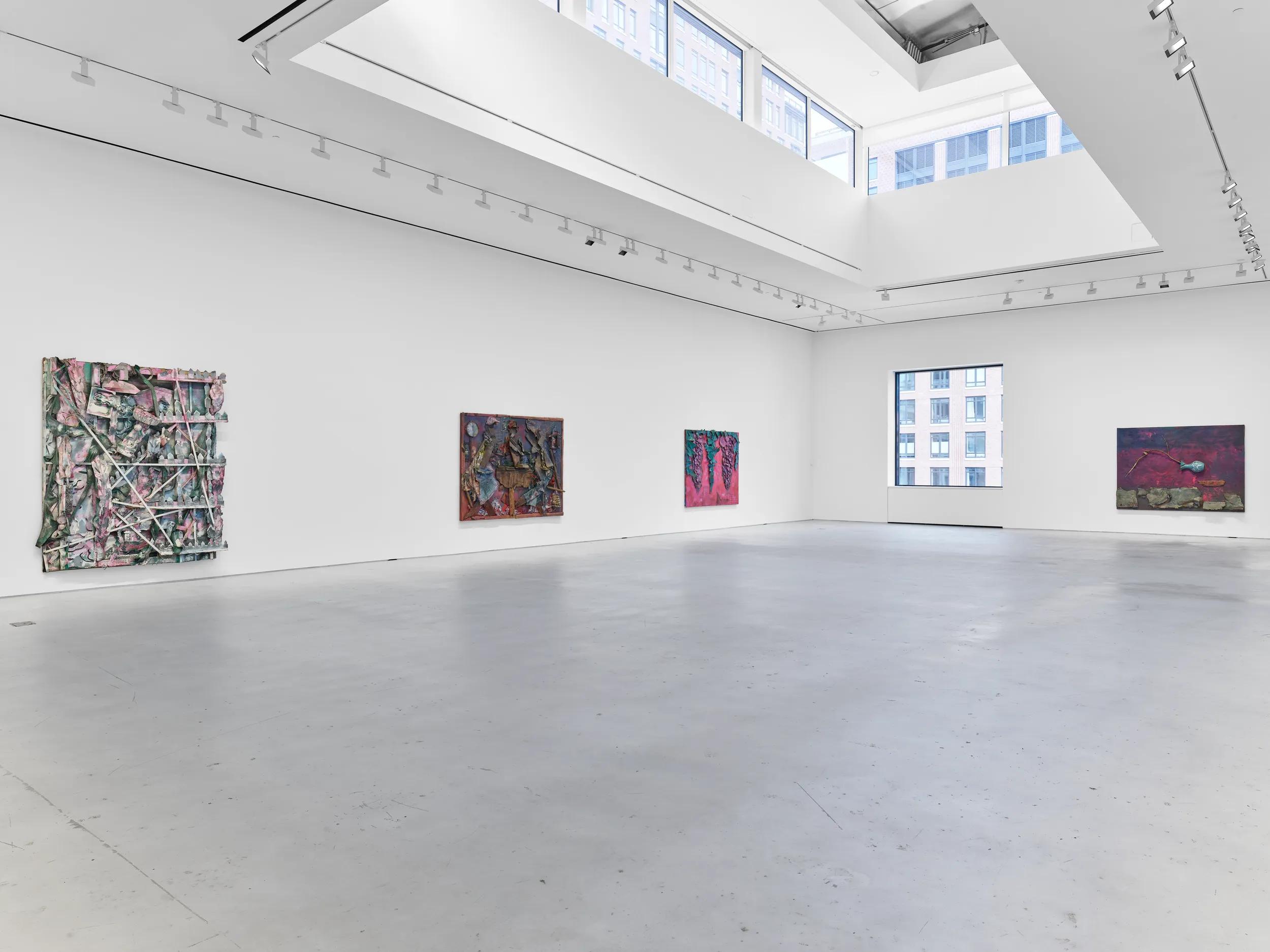
Fausto Melotti
Theatre
19 January – 20 April 2022
London
Fausto Melotti is considered a pioneer of Italian art and is acknowledged for his unique contribution to the development of mid-century European Modernism.

Explore the exhibition
Curator Saim Demircan introduces this exhibition of sculptures, ceramic pieces and works on paper by Italian sculptor, painter and poet Fausto Melotti. On display for the first time at Hauser & Wirth in London, the selection of works places an emphasis on the theatrical within Melotti’s practice and includes artworks spanning five decades from the 1930s until his passing in 1986. As Demircan says, ‘it wasn’t until the early 1980s that he designed set pieces for the actual stage. This exhibition looks back throughout Melotti’s lifetime to consider how theatre—conceptually as much as a dramatic art—informed the artist’s own creativity.’

Coming of age in prewar Milan and living through the horrors of the Second World War, Melotti metabolized wartime devastation in his work by returning to Renaissance principles of harmony, order, geometry, and musical structure, which he integrated into a highly personal yet universally accessible artistic language that expresses the full range of emotional experiences in modern human existence.
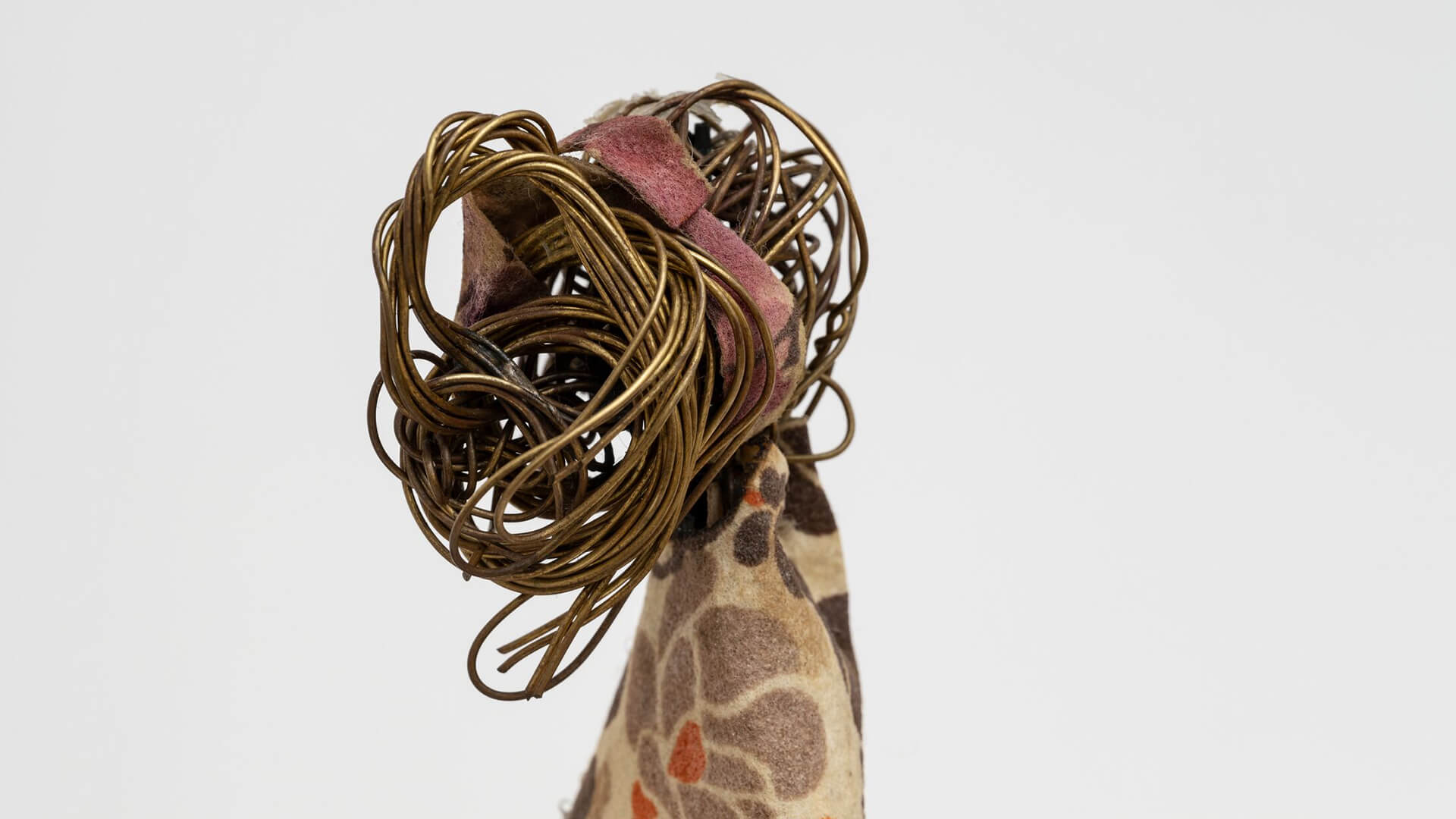
Considering the South Gallery as a stage, a selection of Melotti’s teatrini (little theatres) provide a backdrop for sculptural works that allude to the artist’s sensibility for dramaturgy, storytelling and allegory. These often share material qualities that resemble set design, such as ‘Ifigenia (Iphigenia)’ (1978) or ‘L’ombra dell’anima (The Shadow of the Soul)’ (1984) or narrative scenes with miniature figures in ‘Tabernacolo Violato (Violated Tabernacle)’ (1980) and ‘Il passo della zingara (The Step of the Gipsy)’ (1983). Elsewhere, works such as ‘Da Shakespeare (After Shakespeare)’ (1977) and ‘Madame X’ (1982) refer directly to theatrical protagonists.
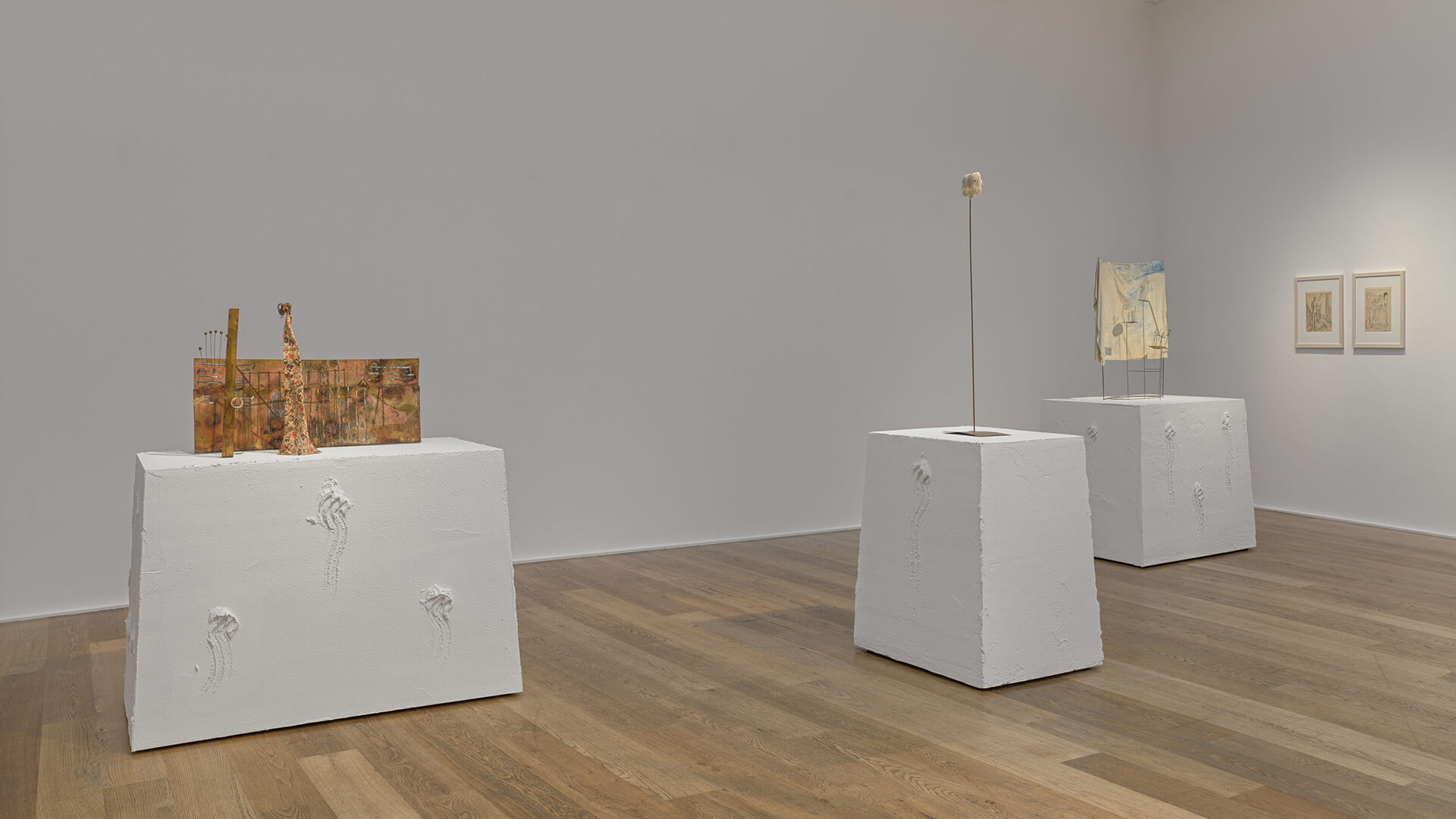
Melotti’s close connection with dramaturgy is best exemplified in his series of ceramic works, the teatrini. Within a clay-fired ‘stage’, framing a single moment or multiple mise-en-scènes and featuring miniature objects and figures, Melotti’s little theatres offer lively and fragmented narratives acting as theatrical portals into other more metaphysical worlds. One of the first examples from this series, ‘Teatrino (Little Theatre)’ (c. 1950), is on display and re-encapsulates the artist’s synthesis of lyrical abstraction and meticulous craftsmanship.
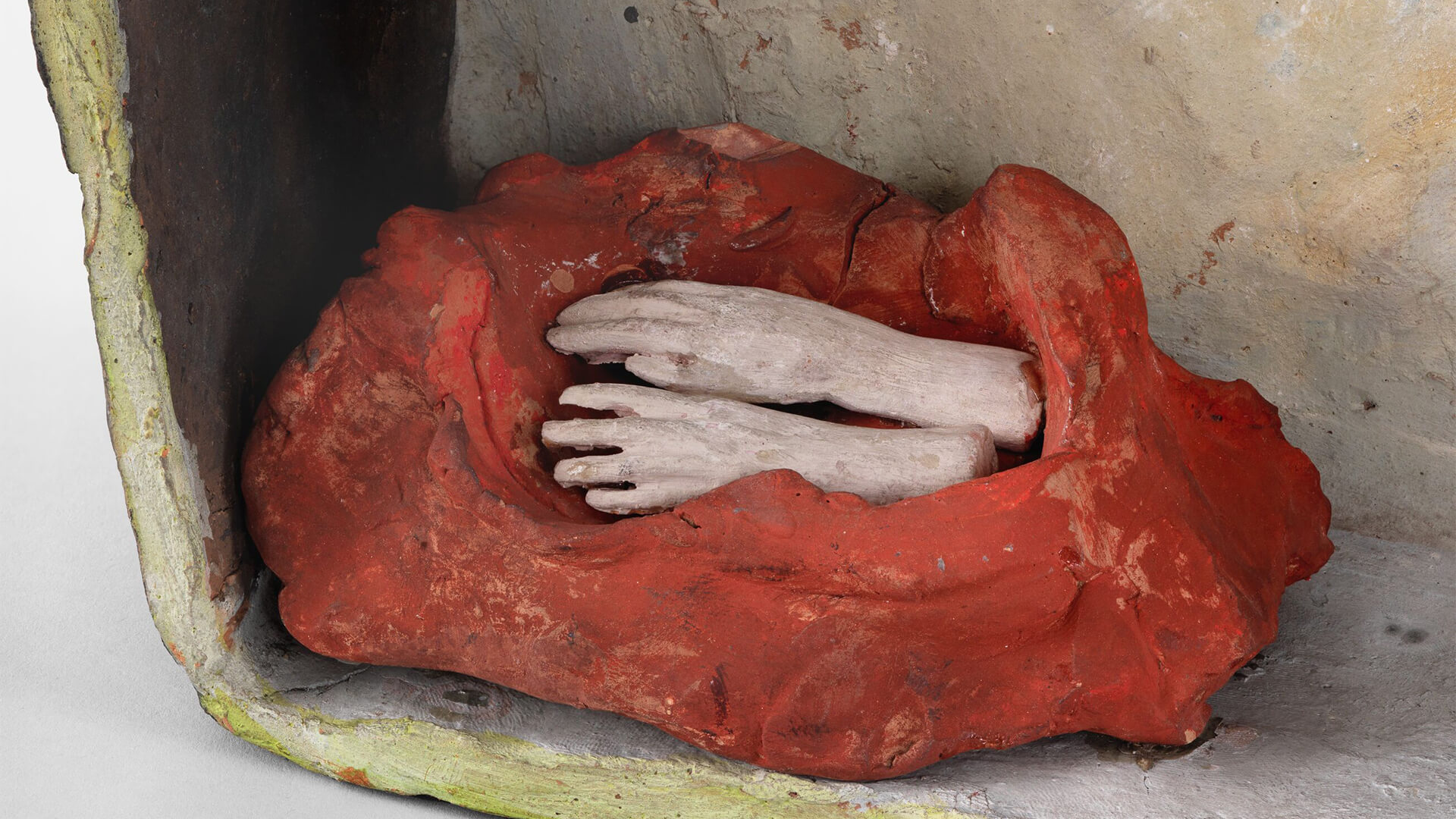
Poised between narration and symbolism, Melotti produced the teatrini as autonomous works within his artistic practice. Additional teatrini include ‘Le mani (The hands)’ (1949), a tableau in which he used brass as well as clay to construct a theatre of the absurd, with disembodied hands being overlooked by a Giacometti-esque figure; and the visibily more figurative ‘Buona notte, bambini (Good Night, Children)’ (1984), featuring distinctly child-like characters.
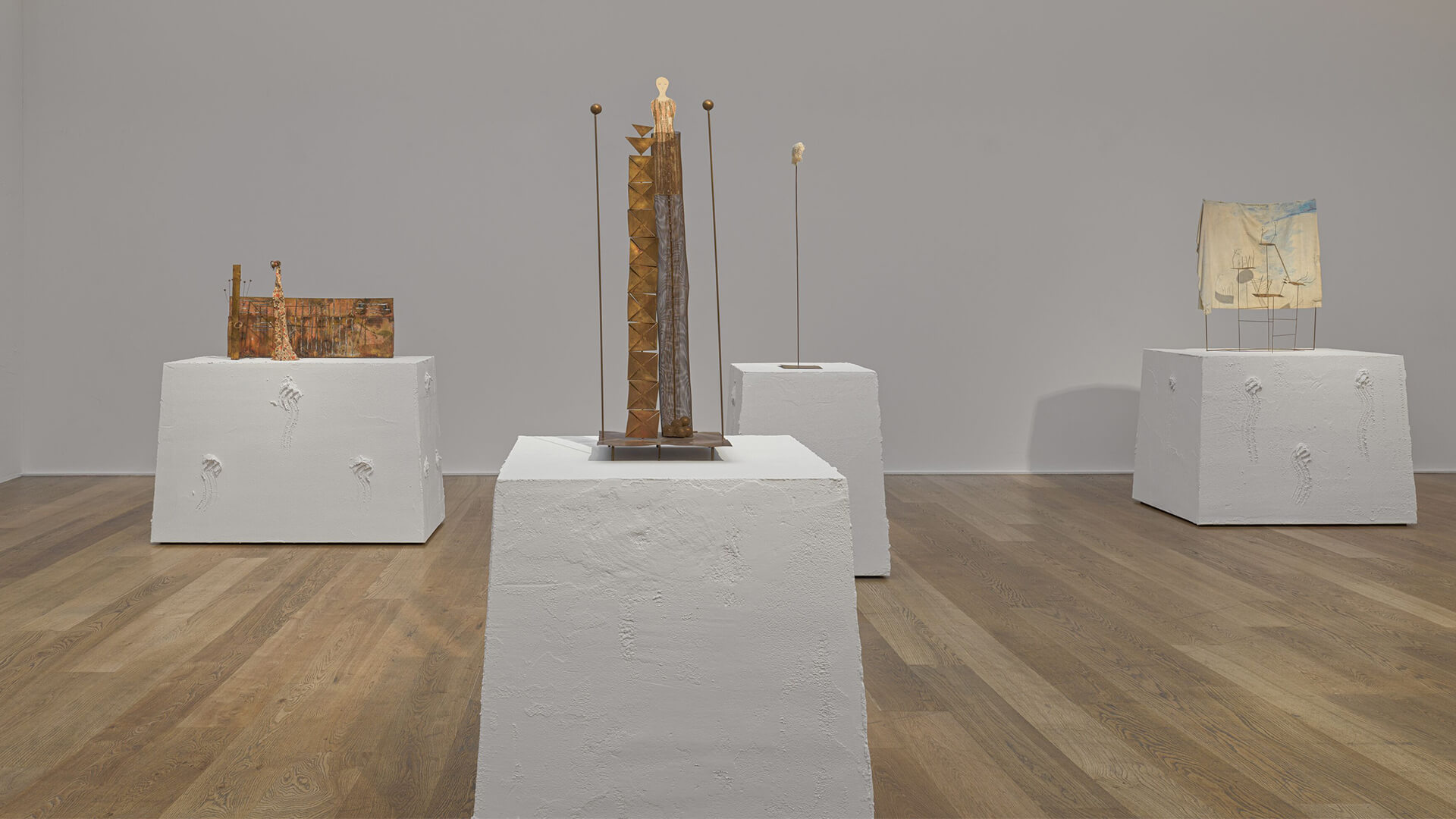
Melotti was involved in the stage and costume design for numerous productions. This includes the 1982 ballet entitled ‘Le chant du rossignol’ with music by Igor Stravinsky on the occasion of 45th Maggio Musicale Fiorentino in Florence. In 1984, Melotti was also responsible for the stage setting and costume design of ‘Belfagor’ based on the novel by Niccolo Machiavelli at the Teatro Comunale in Pistoia, Italy. In the final year of his life, he designed a set for an opera festival organized by the Teatro dell’utopia at the Cenacolo di Ognissanti in Florence.
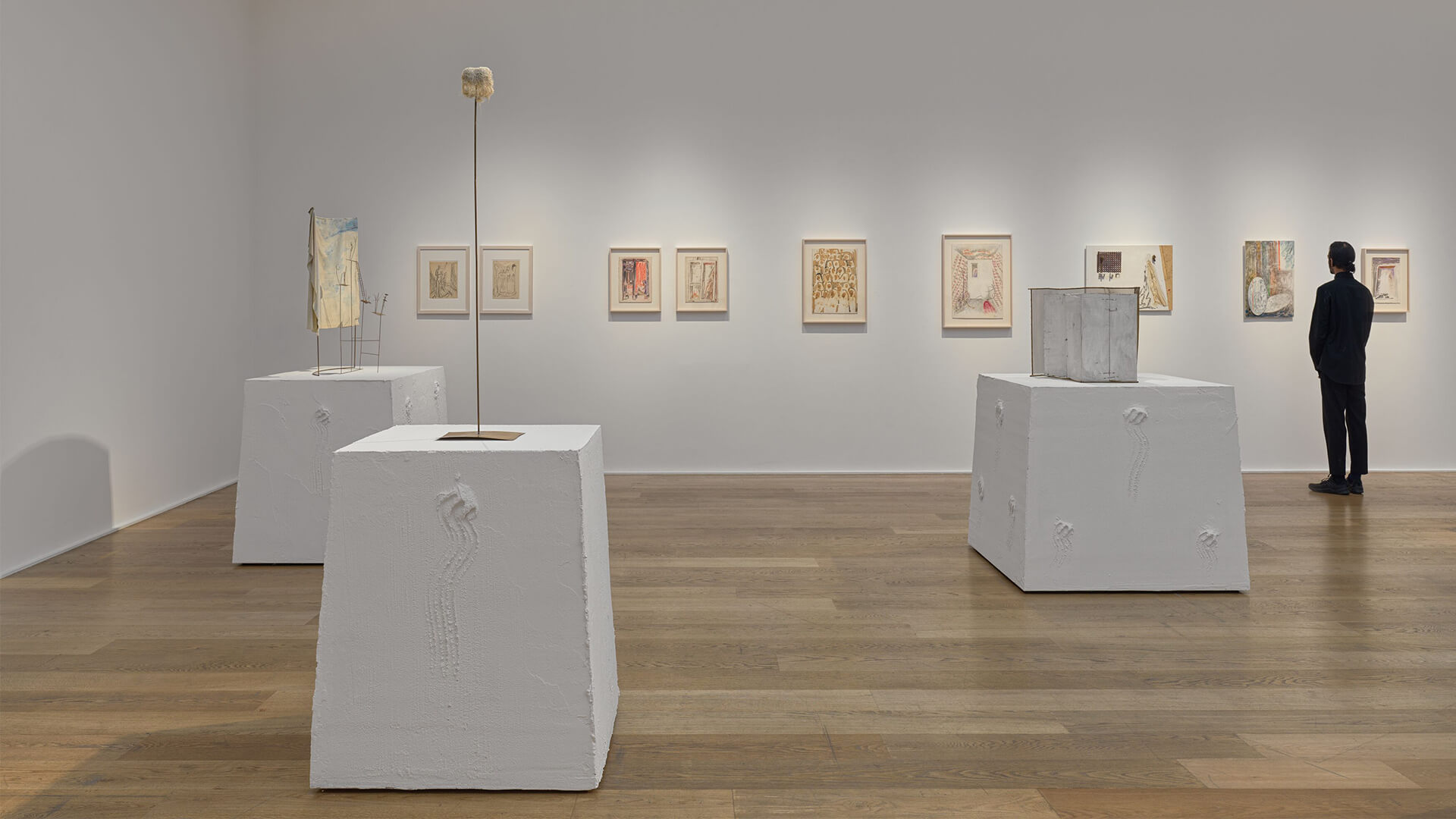
The exhibition is designed in collaboration with artist Aaron Angell who has developed custom made pedestals for Melotti’s sculptural works, and a coved wall in which to display the teatrini. The show will be further complemented by a series of drawings and two-dimensional works in mixed media relating to the theatrical which provide further insight on Melotti’s process, including preparatory drawings for the teatrini series.

About the curator
Saim Demircan is a curator and writer based in New York and Turin. Recently, he has curated exhibitions at 80WSE, NYC; Aspen Art Museum, Colorado, and Fridericianum, Kassel. He was the 2017 recipient of the Goethe-Institut New York’s curatorial residency program, Ludlow 38 in NYC. Between 2012 and 2015 he was a curator at Kunstverein München in Munich. Previously, he curated a two-year program of offsite projects, as well as an exhibition of works by German artist Kai Althoff at Focal Point Gallery in Southend-on-Sea. Demircan has published on numerous artistic practices; his writing regularly appears in periodicals such as Art Monthly, frieze and Texte Zur Kunst.
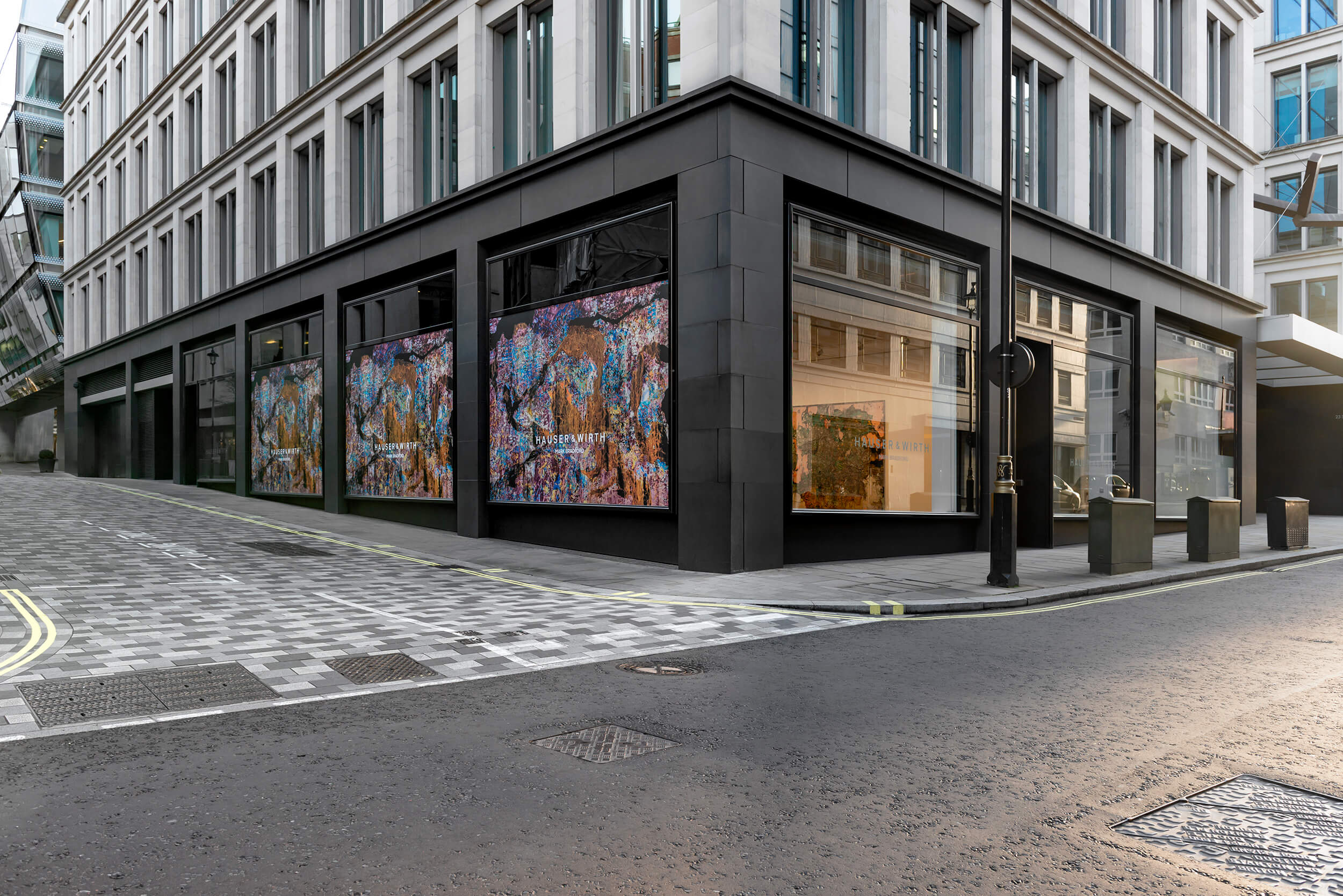
On view in London
The gallery is open Tue – Sat, 10 am – 6 pm. To plan your visit please visit our location page.
About the Artist
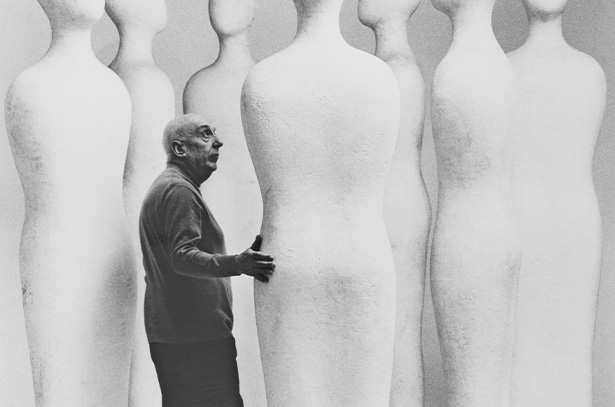
Fausto Melotti
Inquire about available works by Fausto Melotti
‘Fausto Melotti. Theatre’ is on view now through 20 April 2022 at Hauser & Wirth London.
Related Content
Current Exhibitions
1 / 9
